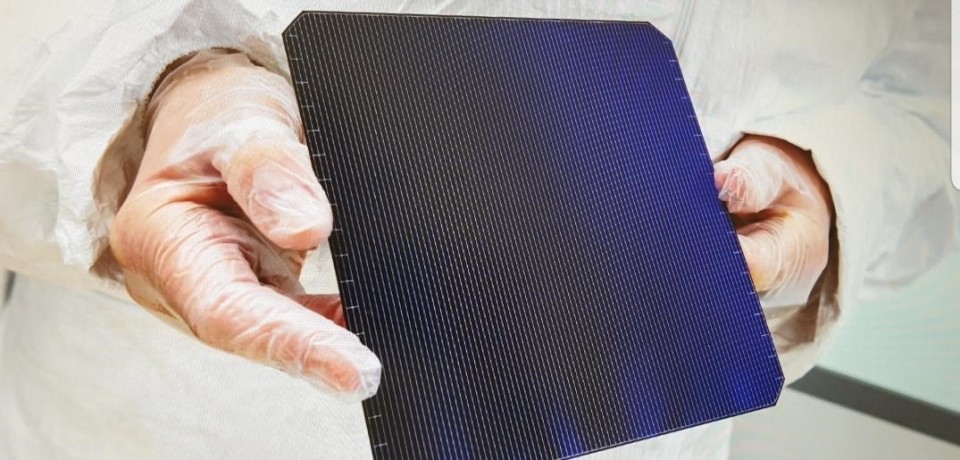The National Solar Energy Institute (INES) arm of the French Alternative Energies and Atomic Energy Commission (CEA) claims to have achieved a 24.63% conversion efficiency for a heterojunction (HJT) solar cell based on a standard M2 wafer.
The feat was achieved in collaboration with the Enel Green Power renewable energy business of Italian state-owned power company and gas distributor Enel.
“The result was confirmed by the German Institute for Solar Energy Research in Hamelin (ISFH),” a spokesperson for Enel told pv magazine.
The Italian company said the bifacial cell’s front-side efficiency was raised by around 0.7% using an improved busbar-free screen printing metallization process based on heterojunction processes developed between Enel and INES, using manufacturing equipment provided by Swiss specialist Meyer Burger.
No busbars
Enel said the increase in efficiency was made possible by combining busbarless technology – which enables more light to fall onto the cell surface – and a treatment developed by INES and Enel which further improved cell passivation. “The process also requires less silver and is becoming cheaper,” the spokesperson said.
He added, modules based on the cell technology with 23% efficiency are being manufactured at Enel’s solar module factory in Catania, Sicily. “Our plan is to reach an average 24% efficiency in production in 2021 and this week’s new achievement is paving the way for this target to be reached,” he said.
Enel Green Power started production of heterojunction modules at its 3Sun module factory in Catania in October. The 200 MW facility manufactures bifacial solar panels with an output of up to 400 W and efficiency of more than 20.5%.
In December, the new energy technologies and nanomaterials (Liten) branch of the French Alternative Energies and Atomic Energy Commission said it had achieved 24.25% peak efficiency for a silicon heterojunction solar cell. In August, troubled Chinese manufacturer Hanergy set a new efficiency record for a silicon heterojunction module at 24.85%, edging out the previous record of 24.5% held by Kaneka. The Japanese company still holds the record for heterojunction cell efficiency, at 26.7% on a slightly smaller device.
This content is protected by copyright and may not be reused. If you want to cooperate with us and would like to reuse some of our content, please contact: editors@pv-magazine.com.




I’m sure all the Moon and Mars lander and satellite manufacturers will be thrilled.
Some corrections are due. Enel is not a state owned company. The Italian treasury owns about 30% of the voting stock. The rest is free float in the market. Kaneka’s 26.7% efficiency is on a fundamentally different architecture as it is a back contacted heterojunction cell not a front contacted one such as Enel’s or Hanergy’s. One should not compare apples and oranges.
Hi Michele, We accept your point about the Kaneka comparison, however it is in a related technology type so I’m sure you will forgive us for that. On the question of Enel, which shareholder has a larger than 30% stake in the business please?
It is available in phillipines?How much watts per panel?
Ownership split, see
https://www.enel.com/investors/equity/shareholders
Thanks for the breakdown Rolf. This indicates the Italian state owns 23.6% of Enel, rather than 30%. Unfortunately, however, it does not indicate whether any of the institutional investors accounting for a total 57.6% of the business individually hold a stake that exceeds 23.6%, thus indicating the definition “state-owned” is wide of the mark.